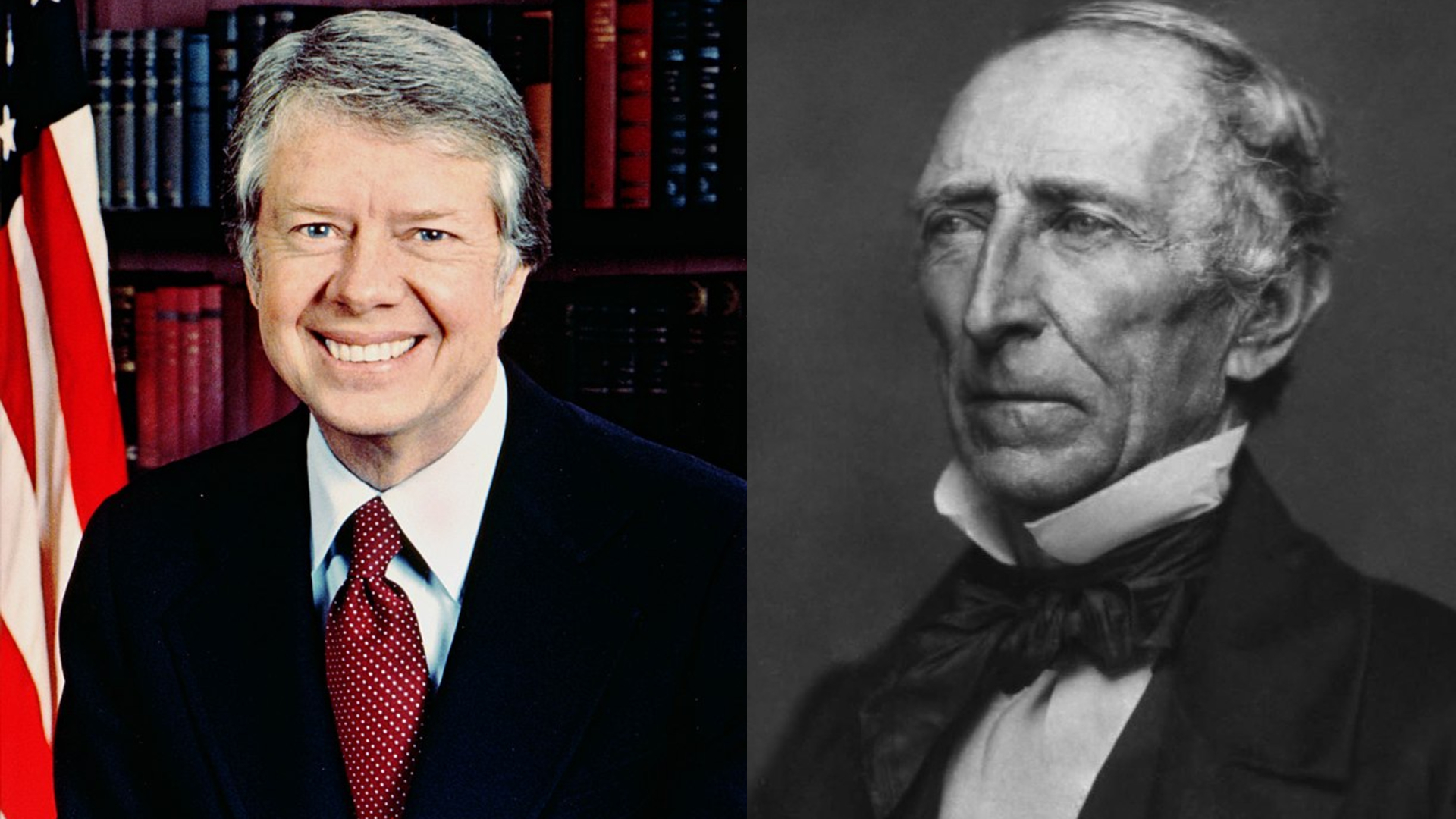When Behavior Beats Logic
Psychology is about asking real questions and watching how people actually behave. Over the years, researchers have designed experiments to explore how we think, feel, and act in everyday situations. Some studies revealed how easily people follow authority. Others showed how group pressure can change opinions. If you’re curious, here are 20 experiments that offer some of the most thought-provoking answers.
1. Pavlov’s Classical Conditioning
Behavior can be shaped without conscious thought, and Pavlov proved it with a dog, a bell, and a bowl of food. By pairing a neutral sound with feeding time, he trained dogs to associate the two. Eventually, the sound alone triggered a physical reaction.
2. Bandura’s Bobo Doll Experiment
Bandura demonstrated how children mimic adults’ actions, especially when those adults seem confident or commanding. When kids saw grown-ups act violently toward a toy, they followed suit. This experiment showed that observation is a powerful teacher.
3. Asch Conformity Experiments
Conforming experiments showed how easily people will go along with a group, even when they know the group is wrong. It’s not because they believe the mistake; it’s because the discomfort of standing out often outweighs the value of being right.
 Asch’s Conformity Experiment on Groupthink by Sprouts
Asch’s Conformity Experiment on Groupthink by Sprouts
4. Harlow’s Monkey Love Experiments
In these experiments, infant monkeys consistently clung to soft, fabric-covered surrogates rather than wire ones that offered food. That showed contact comfort was essential to emotional development. It shook the idea that feeding builds trust in children. Instead, touch, warmth, and security form emotional attachments.
 Attachment Theory - Harlow's study on monkeys: Food or Security by Art & Psychology
Attachment Theory - Harlow's study on monkeys: Food or Security by Art & Psychology
5. The Marshmallow Test (Delayed Gratification)
The challenge of resisting something tempting now for a greater reward later is something everyone faces. Children who waited for two marshmallows instead of eating one immediately showed traits associated with better emotional regulation. However, recent studies suggest this effect may be less pronounced when accounting for socioeconomic factors.
 The Marshmallow Experiment - Instant Gratification by FloodSanDiego
The Marshmallow Experiment - Instant Gratification by FloodSanDiego
6. Loftus And Palmer (Memory Reconstruction)
In 1974, Elizabeth Loftus revealed that subtle word choices can alter memory. Participants watched a car crash and then described it differently depending on the phrasing. In short, eyewitness memories aren’t video recordings—they’re fluid, fragile, and easily manipulated.
 How reliable is your memory? | Elizabeth Loftus by TED
How reliable is your memory? | Elizabeth Loftus by TED
7. Little Albert Experiment
Conditioned fear is a powerful thing. In this case, a baby learned to fear a harmless object—a white rat—after it was repeatedly paired with a loud, startling sound. Eventually, the fear spread to other similar animals. It’s why someone might develop a fear of dogs after just one negative encounter.
8. The Good Samaritan Study
You might think that kindness always depends on values or upbringing, but behavior can also be shaped by something as simple as timing. When people are under pressure, they become less likely to help—even if they’re compassionate by nature.
 21- Would You Help? The Classic Good Samaritan Study by Emotional journey
21- Would You Help? The Classic Good Samaritan Study by Emotional journey
9. Dutton & Aron’s Bridge Study
This study displayed that when people experience physiological arousal—like a pounding heart from fear—they can misattribute that feeling to attraction. Emotions aren’t always clear-cut. Your body might send one message while your brain misinterprets it.
 THE SCIENCE OF LOVE THE ARON STUDY by Coolpsychologist
THE SCIENCE OF LOVE THE ARON STUDY by Coolpsychologist
10. The Spotlight Effect
It’s easy to believe the world is watching your every move. That awkward trip or that nervous joke—surely everyone noticed. But the truth is, most people are far too busy thinking about themselves. This phenomenon highlights how you tend to overestimate how much others pay attention to your flaws.
 The Spotlight Effect: How To Overcome Social Anxiety by Explified Studio
The Spotlight Effect: How To Overcome Social Anxiety by Explified Studio
11. The False Consensus Effect
The False Consensus Effect occurs when people assume that others share their beliefs or preferences more than they actually do. Someone who dislikes a popular TV show might believe that hardly anyone enjoys it despite strong ratings. Such assumptions can distort understanding.
 The Illusion of Agreement: False Consensus Effect |Secrets of Human Behavior by HUMANFACTOIDS
The Illusion of Agreement: False Consensus Effect |Secrets of Human Behavior by HUMANFACTOIDS
12. Rosenthal & Jacobson (Pygmalion Effect)
Raise your expectations, and someone else might rise with them. That’s the magic behind the Pygmalion Effect. Here, students were treated like future stars simply because teachers thought they were; they began performing at higher levels, not because of special skills, but because others saw potential in them.
 The Pygmalion Effect, Growth Mindset, & Learning ft. Robert Rosenthal by Trevor Ragan
The Pygmalion Effect, Growth Mindset, & Learning ft. Robert Rosenthal by Trevor Ragan
13. Festinger’s Cognitive Dissonance
Festinger’s Cognitive Dissonance theory explains the mental discomfort people feel when holding two or more conflicting thoughts, beliefs, or values. To reduce the discomfort, one might rationalize the behavior, perhaps by downplaying health risks or emphasizing stress relief.
 1954 Festinger & Carlsmith's Cognitive Dissonance Study by Angi English
1954 Festinger & Carlsmith's Cognitive Dissonance Study by Angi English
14. The Visual Cliff Experiment
Researchers Eleanor Gibson and Richard Walk created a platform with a patterned surface that appeared to drop off sharply, though a clear glass pane covered the drop. Infants placed on the platform typically refused to crawl over the apparent edge, suggesting an early ability to perceive physical depth.
15. The Stroop Effect
The Stroop Effect highlights the brain’s struggle when faced with conflicting information. It serves as a classic demonstration of cognitive control limits and is frequently used in psychological testing to assess mental flexibility and executive function.
16. Tajfel’s Minimal Group Paradigm
Group loyalty can form out of nowhere. The moment someone feels like part of a group, identity kicks in, and decisions shift. You may not even realize it’s happening, but preferences start tilting, and outsiders suddenly feel a little more distant.
 The sibling rivalry that divided a town - Jay Van Bavel and Dominic Packer by TED-Ed
The sibling rivalry that divided a town - Jay Van Bavel and Dominic Packer by TED-Ed
17. Sherif’s Robbers Cave Study
This study revealed just how quickly group conflict forms and, more importantly, how shared purpose can dissolve it. Rivalries that once felt personal start to feel pointless when everyone’s pulling toward the same goal. Sometimes, it just needs a problem that everyone agrees is worth solving.
 5 Minute History Lesson, Episode 3: Robbers Cave by Cummings Center for the History of Psychology
5 Minute History Lesson, Episode 3: Robbers Cave by Cummings Center for the History of Psychology
18. The Mere Exposure Effect
Familiarity breeds affection far more often than contempt. The more often you see a face, the more likely you are to start liking it. Your brain values predictability, and the things you encounter repeatedly feel safer and more likable over time.
 Seen It Enough? Now You Love It! The Mere Exposure Effect Explained by Gigihub
Seen It Enough? Now You Love It! The Mere Exposure Effect Explained by Gigihub
19. The Halo Effect Study
Good looks can distort judgment. First studied in 1920, the halo effect describes how one positive trait, like attractiveness, leads people to assume others (intelligence, kindness). It’s why charmers get callbacks and polished speakers earn more trust.
 Unknown authorUnknown author on Wikimedia
Unknown authorUnknown author on Wikimedia
20. Zajonc’s Social Facilitation Theory
An audience changes everything. When people are watching, nerves tend to take over. That effect highlights how awareness of being seen can boost performance or trip it up, depending on how prepared you are. You’ve likely felt it during presentations or casual conversations.
KEEP ON READING

1 Weird Fact About Every President
Washington, Lincoln, FDR. Most people know something about the lives…
By Robbie Woods Dec 3, 2024
10 Amazing Popes & 10 Who Weren't So Great
An Odd Cast of Characters Throughout History. From popes who…
By Henry Judd Apr 29, 2025
10 Ancient Civilizations You Don’t Want to Be Trapped In…
Grab Your Time Machine. Trying to pick out an ancient…
By Farva Ivkovic Feb 21, 2025
10 Brilliant Military Tactics That Changed History & 10 That…
That Time Egypt Fought 100 Cats. Sometimes reality is stranger…
By Farva Ivkovic Jan 22, 2025
10 Common Misconceptions About Vikings & 10 Facts Everyone Should…
Truth's Way Cooler Than Legend. You can say a lot…
By David Davidovic May 12, 2025
10 Cool Facts About Machu Picchu & 10 Reasons Why…
Why Do We All Want To See Machu Picchu?. Machu…
By Megan Wickens Oct 23, 2024







